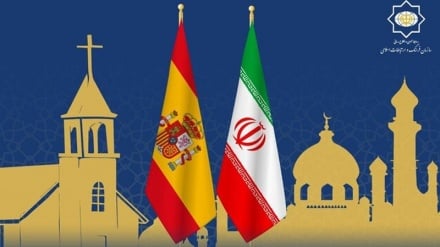Unity in the Islamic World (3)
Welcome to this week’s episode of the series Unity in Islamic World. Today, we discuss disunity of Muslims throughout the rule of Umayyad and Abbasid Dynasties.
In the past two episodes we spoke of the importance attached on solidarity of Muslims by the ayahs of Holy Quran; and the strategy of the Prophet of Islam, Mohammad (Blessings of God upon him and his progeny) in establishment and reinforcement of the solidarity of Islamic Ummah. It was also said that the divine religion of Islam, with the motto of unity and fraternity, and avoidance of discord and enmity, under the banner of monotheism, managed to overcome the ethnical and tribal discord and hostility which prevailed among Arabs in the Age of Ignorance. This discord which constantly sparked confrontations and bloodshed, wore off under the banner of belief in monotheism. Also, last week, we spoke of formation of a council in a location named Saqifeh, after the demise of Prophet of Islam. Despite the instructions of Prophet Mohammad for maintenance and continuation of the honor and grandeur of Muslims, the Saqifeh incident after the demise of Prophet of Islam caused a string of differences of opinion and conflicts in the Islamic community. However, upon the foresight of the First Infallible Imam of Prophet Mohammad’s Household, Imam Ali (Peace be upon him). Saqifeh incident did not lead to a dispute.
Throughout the rule of caliphs, Muslims’ territory vastly expanded, while differences of opinions emerged among caliphs. These differences of opinion were rooted in the resurgence of ethnical and tribal prejudices. However, the territorial integrity of the Islamic World was maintained. Upon the martyrdom of Imam Ali (AS), the resentments which were prevalent in the Age of Ignorance resurged, sabotaging the solidarity of the World of Islam, with the revival of ethnical and racial prejudices. In this phase in time, caliphate became hereditary.
Throughout the rule of Umayyad Dynasty, the policy of racial discord and separation of ethnicities was pursued, laying the ground for widening social rifts.
For instance, Iranians who could no longer bear the injustices imposed on them by the Sassanid rulers, and were inclined toward the divine religion of Islam as the harbinger of justice and freedom, staged protests against the Umayyad rulers upon witnessing these rulers’ anti-Islamic measures and ethnical prejudices. In this period in time, racial and tribal skirmishes among Muslims set the stage for growing rifts.
In the last phase of rule of Umayyad Dynasty, popular riots took shape as the consequence of surging discontent. The reactionary thoughts of Umayyad rulers had led the opponents of that status quo to conclude that all Muslims should maintain equal rights, irrespective of their race. Meanwhile, among all unrests, the only movement which shook Umayyad’s power, was the uprising staged by Alawis and Abbasid, who managed to ouster Umayyad Dynasty. However, Umayyad Dynasty was replaced by Abbasid Dynasty, who claimed they would unfold a new chapter of justice, piety, and prosperity in the Islamic community.
Meanwhile, Abbasid Dynasty did not deliver on their vows and in fact set the stage for disunity and disintegration of the Islamic world, more than ever. The death of Umayyad ruler, Haroun ul-Rashid, and the rivalry of his two sons, Amin and Ma’moun, laid the ground for a civil war; and the widening rifts in the Islamic World in the Abbasid era gradually surfaced. The Umayyad ruler, Abdul-Rahman, established an independent ruling system in Andalusia. In Iran’s Khorasan, Transoxiana, and Sistan, separatist movements emerged, causing hassles for the central ruling system. Self-autonomy currents emerged in Egypt. In Morocco and Algeria, Idrisid Dynasty came to power, and a while later, Fatimid Caliphate was founded in Egypt. In this manner, upon the emergence of these movements, disunity among Muslims was sparked.
Concurrent with mounting political rifts; emergence of Greek thoughts and modern philosophy; and formation of conflicting ideologies; political conflicts grew. Meanwhile, the Abbasid caliph recognized the four denominations of Sunnis, and suppressed Shiasm. Nonetheless, caliphate gradually lost its influence, and no sustainable unity was established. Even, the cultural growth and development during the rule of Bouyad Dynasty did not revive or cement unity.
Upon the victory of Saljuqid Dynasty over Bouyad rulers and their entry to Baghdad; caliph came under the influence of Saljuqid rulers. Meanwhile, the role played by the Saljuqid era vizier, Khaje Nezam ul-Molk, in establishment of unity, is of importance. The presence of Khaje Nezam ul-Molk in the royal court assisted the Saljuqid ruler, Malek Shah, to turn his administration into a cultural and military power in Middle East. However, this relative political power and unity in the Saljuqid territory did not last long, and widening rifts emerged upon the murder of Khaje Nezam ul-Molk and Malek Shah.
The chaotic state in the Saljuqid territory, especially throughout Syria and Palestine, raised the best opportunity for European kings and religious figures for raiding Bait Ul-Moqaddas. Church officials, in addition to provocation of Christians, fueled and stoked disunity among Muslims. In this manner, conditions were in place for the break out of Crusades among Muslims and Christians, which lasted for two hundred years. One of the other consequences of widening rifts in the Islamic World, and efforts to undermine Saljuqid Dynasty was paving the way for the attack of Mongol Empire ruler, Genghis Khan, against Iran.
After the murder of Malek Shah, despite the efforts made for reestablishment of unity among Muslims, the political discord among Muslims lingered, especially among Baghdad caliphs and Khwarazm-Shahian rulers, deteriorating Muslims’ strength, such that the then Baghdad Caliph, Al-Naser, called on the Mongol Ruler, Genghis Khan, to raid Muslim territories, under the authority of Khwarazm-Shahian rulers. Genghis Khan seized this opportunity, which ultimately led to the fall of caliphate in the year 656 AH.
In the beginning of 8th Century AH, Ottoman forces came to power, gradually turning into the most powerful Muslim force against Crusaders. The conquest of Constantinople by Ottoman Caliph, Sultan Mohammad the Second, drew the attention of the World of Islam toward the might of Ottoman Empire. Muslims honored Sultan Mohammad the Second, which led to his further empowerment, such that the city of Istanbul turned into the powerful center of caliphate and the leadership of the Islamic community.
Next week we will speak of the instatement of Abbasid rulers and their confrontation against Ottoman Caliphate.
MR/EA


